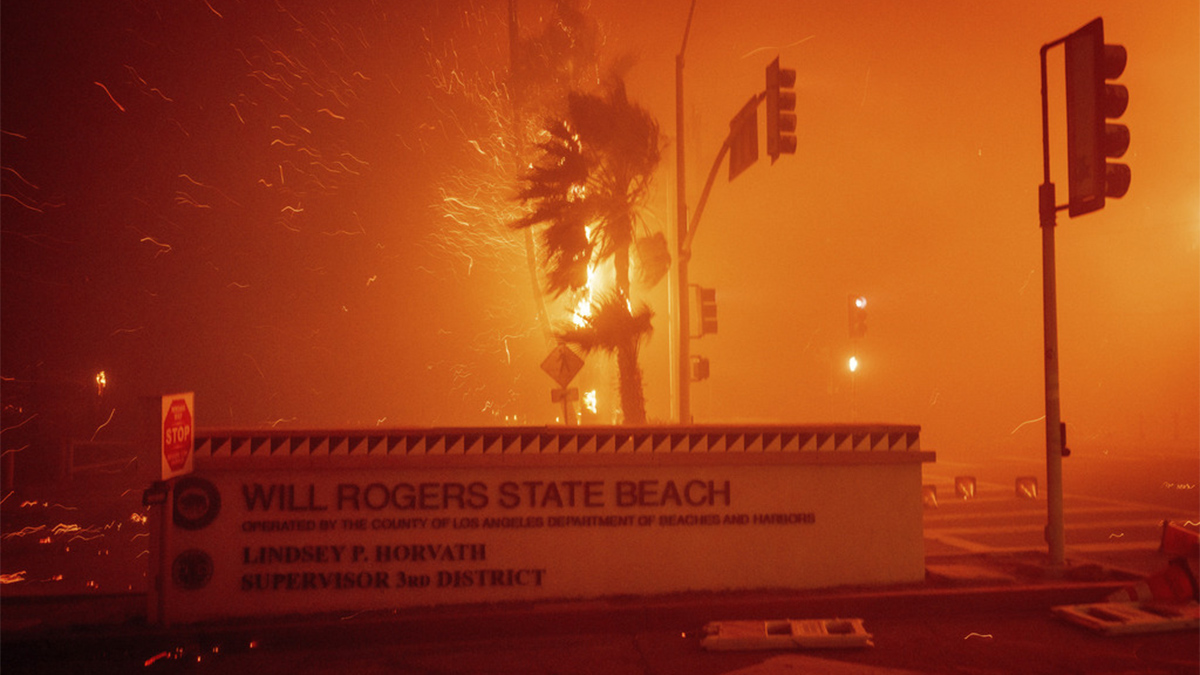Los Angeles, a vast American city where urban life meets wild nature, is battling dangerous fires. This isn’t a rare event—it’s part of a long history of fires that have shaped cities, tested communities and brought about big changes. Fires have both destroyed and renewed, highlighting weaknesses while sparking improvements.
As Los Angeles fights this latest inferno, here’s a look at the past to see how cities may emerge stronger and be better prepared in a world increasingly affected by climate change:
Lessons from urban fires through history
The history of urban fires is full of important lessons. The Great Fire of Rome in 64 CE, for example, destroyed two-thirds of the city and was rumoured—though never proven—to have been started by Emperor Nero. This disaster led to important changes, like stricter building rules and left a lasting mark on architecture such as the construction of Nero’s grand Domus Aurea.
Similarly, the Great Fire of London in 1666, which began in a bakery on Pudding Lane, wiped out 80 per cent of the city. While it was devastating, it also got rid of areas affected by plague leading to a rebirth of the city under Christopher Wren and the use of fire-resistant materials in buildings.
The Great Chicago Fire of 1871 is another example. It started in a barn and destroyed 3.3 square miles of the city leaving 100,000 people homeless and causing damage worth $200 million.
Impact Shorts
More ShortsHowever, it helped Chicago become more modern, leading to the development of steel-framed skyscrapers and stronger fire safety rules. Fires caused by natural disasters, like the San Francisco Earthquake and Fire of 1906 and the Tokyo Great Fire of 1923, show how disasters can severely impact cities.
The Tokyo fire, which followed the Great Kanto Earthquake, killed over 1,40,000 people and led to a redesign of Tokyo with wider streets and better urban planning.
Smaller but equally important fires have also made a difference. The 1944 Victoria Dock Explosion in Mumbai killed over 800 people and revealed serious problems with how hazardous materials were stored. This tragedy led to major changes in India’s port safety rules, improving firefighting resources and regulations for handling dangerous goods.
All these disasters share a common theme: urban fires, while destructive, often serve as turning points encouraging cities to rebuild in a safer and stronger way.
The unique challenge of Los Angeles
Los Angeles faces a fire risk unique in scale and complexity. Unlike historical fires confined to urban centres, LA’s fires straddle the boundary between urban and wildland areas. This duality poses significant challenges as wildfires fuelled by climate change and urban sprawl merge to create unprecedented emergencies.
The city’s location, climate and rapid urbanisation amplify its vulnerability. Drought conditions, high temperatures and strong winds exacerbate fire severity while dense housing and inadequate urban planning create ripe conditions for fire spread.
Fires in LA not only threaten lives and property but also disrupt ecosystems, destroy habitats and release massive amounts of carbon dioxide contributing to the very climate change that fuels their frequency and intensity.
Fire as a driver of urban reform
History shows that despite its destructive power fire can lead to important changes. The Great Fire of London led to the use of stone instead of wood in buildings and Chicago’s rebuilding after the 1871 fire introduced new ways to plan cities.
Similarly, Tokyo’s recovery after the 1923 fire led to city designs with safety in mind. Now, Los Angeles needs to follow this tradition of reform to fix its weaknesses.
Role of climate change
Modern fires, including those in Los Angeles, are increasingly influenced by climate change. Rising temperatures, long droughts and extreme weather events create conditions that make fires bigger and more destructive. Unlike past urban fires, which were often caused by accidents or human mistakes, today’s fires are part of a larger problem that requires global cooperation.
The 1871 Peshtigo Fire, the deadliest wildfire in US history, burned 1.2 million acres and showed how important it is to manage natural landscapes. Los Angeles faces a similar challenge, as uncontrolled urban growth and poor forest management make fire risks worse. Sustainable city planning must include climate adaptation strategies, like restoring ecosystems, managing plant life and investing in renewable energy sources to reduce carbon emissions.
Historical echoes in today’s fires
The fires in Los Angeles are similar to past disasters, not just in their destruction, but also in their ability to drive change. For example, the 2017 Grenfell Tower fire in London exposed serious problems with cladding materials and fire safety systems, leading to a worldwide reassessment of building rules for high-rise buildings. Similarly, LA’s ongoing fire crisis shows the need for a thorough review of building practices, fire management methods and city planning policies.
Like the Victoria Dock Explosion in Mumbai, the Los Angeles fires reveal deep problems that need to be fixed. Just as Mumbai put in place stricter safety rules after its tragedy, Los Angeles can learn from its current struggles to build a stronger and more resilient future.
Resilience through renewal
From Rome to Tokyo, urban fires have historically been turning points forcing societies to face their weaknesses and adapt. Los Angeles is at such a crossroads now. How the city responds to its fires will not only affect its immediate recovery but also its long-term ability to cope with growing climate challenges.
While the size of modern fires is overwhelming, history provides a guide for recovery. By combining lessons from the past with new strategies for the future, LA has a chance to shift its story from one of destruction to one of renewal.
Fire, the great destroyer, is also a powerful force for change. As Los Angeles faces its latest challenge, it has the potential to redefine what resilience means for future generations showing that from the ashes of disaster, a stronger and safer city can rise.


)

)
)
)
)
)
)
)
)



